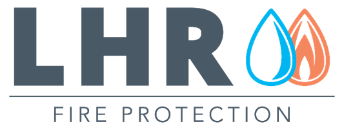When it comes to maintaining a safe and functional kitchen, kitchen hoods play a more important role than many people realize. These appliances aren’t just about ventilation—they’re essential to preventing serious safety hazards. Without regular kitchen hood inspection, small problems can evolve into dangerous incidents like grease fires, carbon monoxide buildup, or electrical failures. In this blog, we’ll explore how routine inspections help prevent these common kitchen accidents and what steps you can take to keep your kitchen safe.
Why Your Kitchen Hood is More Than Just a Fan
Your kitchen hood does far more than circulate air. It acts as a frontline defense against hazards that could compromise your home or business.
Role in Air Quality and Odor Removal
By filtering out smoke, odors, and airborne grease particles, your hood keeps your kitchen air breathable and clean—especially important in enclosed or high-use cooking areas.
Critical for Fire Safety and Grease Management
Kitchen hoods trap grease before it accumulates on surfaces or within ducts. This not only keeps your kitchen clean but also reduces the risk of grease-fueled fires.
Often Overlooked Maintenance Point
Many homeowners and even some restaurant managers forget that kitchen hoods require maintenance. Filters clog, ducts collect residue, and fans wear down—all of which can compromise the system’s effectiveness.
Accident 1: Grease Fires
Grease fires are among the most common and dangerous kitchen incidents. They spread fast and are difficult to extinguish without the right equipment.
How Grease Accumulates in Hoods and Ducts
Over time, airborne grease particles from frying and grilling stick to hood filters and ducts. If not removed, this residue thickens into a highly flammable substance.
The Ignition Point: High Heat from Cooking
A spark or even extreme cooking temperatures can ignite the grease trapped in your hood, especially during high-heat cooking like wok frying or grilling.
Rapid Spread of Grease Fires
Once ignited, grease fires can spread through the ductwork, reaching other parts of the building. This can quickly escalate beyond a stovetop incident.
Inspection Solution: Regular Filter Cleaning/Replacement and Duct Inspection
Regular kitchen hood inspection ensures filters are clean and ducts are free of excessive grease buildup, reducing the risk of ignition.
Accident 2: Carbon Monoxide Poisoning (for Gas Stoves)
Poor ventilation from faulty kitchen hoods can lead to carbon monoxide (CO) accumulation—a silent, deadly risk.
Improper Ventilation Leading to Gas Buildup
If your hood isn’t ventilating properly, gases like carbon monoxide from gas stoves can linger and concentrate in the kitchen.
Blocked or Malfunctioning Exhaust Systems
Obstructions in the duct or fan malfunctions can prevent harmful gases from escaping, especially in closed cooking spaces.
Symptoms and Dangers of CO Poisoning
Symptoms like headaches, dizziness, or nausea can be warning signs of CO exposure. Prolonged exposure can be fatal if not addressed.
Inspection Solution: Checking Fan Functionality, Clear Ducts, and Backdraft Prevention
Routine kitchen hood inspection helps ensure all parts are functioning correctly and ducts are clear, allowing gases to exit safely.
Accident 3: Electrical Malfunctions and Shocks
Electrical hazards related to kitchen hoods are often overlooked but can be dangerous. Here’s how they happen and what you can do.
- Frayed Wiring or Loose Connections Within the Hood
Over time, electrical wiring can degrade or disconnect, increasing the risk of short circuits. - Water or Grease Contamination Leading to Shorts
Grease and moisture buildup can infiltrate electrical components, leading to sparking or total failure. - Risk of Electrical Fires or Shocks to Users
These failures can cause electric shocks or spark small fires within the hood or nearby walls. - Inspection Solution: Checking Wiring, Lighting, and Fan Motor for Issues
Inspecting all electrical parts ensures no damage or wear is present that could lead to failure.
Your Kitchen Hood Inspection Checklist
Keep your kitchen hood in peak condition by regularly running through this simple maintenance checklist:
- Regular Filter Cleaning or Replacement
Clean reusable filters monthly or replace disposable ones as directed by the manufacturer. - Testing Fan Operation and Suction Power
Run the fan and feel for airflow. Weak suction could indicate clogs or motor issues. - Inspecting Ducts for Grease Buildup or Obstructions (Visually)
Use a flashlight to check duct interiors for visible grease or debris buildup. - Checking Lights and Electrical Connections
Make sure lights turn on reliably and that there are no exposed or frayed wires. - Listening for Unusual Noises from the Motor
Grinding, squealing, or rattling sounds often point to worn-out or loose parts.
When to Call a Professional for Hood Inspection and Cleaning
Some issues require professional intervention. Don’t wait until it’s too late—contact a licensed expert if:
- You Notice Significant Grease Buildup in Ducts
Thick layers of grease are fire hazards and require deep cleaning tools. - Persistent Lack of Suction Power
If your hood isn’t ventilating effectively even after basic cleaning, a pro can identify hidden problems. - Unusual Noises or Burning Smells
These may point to motor damage or electrical issues that need urgent attention. - For Commercial Kitchens (Mandatory Professional Cleaning)
In restaurants and commercial spaces, professional cleaning is often a legal requirement for fire code compliance.
Keep Your Kitchen Safe and Functional
Whether in a home or commercial setting, consistent kitchen hood inspection is essential for preventing accidents and protecting your property. With the right attention to your system’s ventilation, electrical, and filtration components, you can avoid common dangers and improve kitchen performance.
Looking to upgrade your ventilation system? A professional kitchen hood installation can give you peace of mind and long-term reliability. And remember, proper kitchen hood maintenance isn’t just about safety—it’s also about efficiency, air quality, and extending the life of your appliances. Contact us today to schedule your inspection or installation with LHR Fire Protection.
